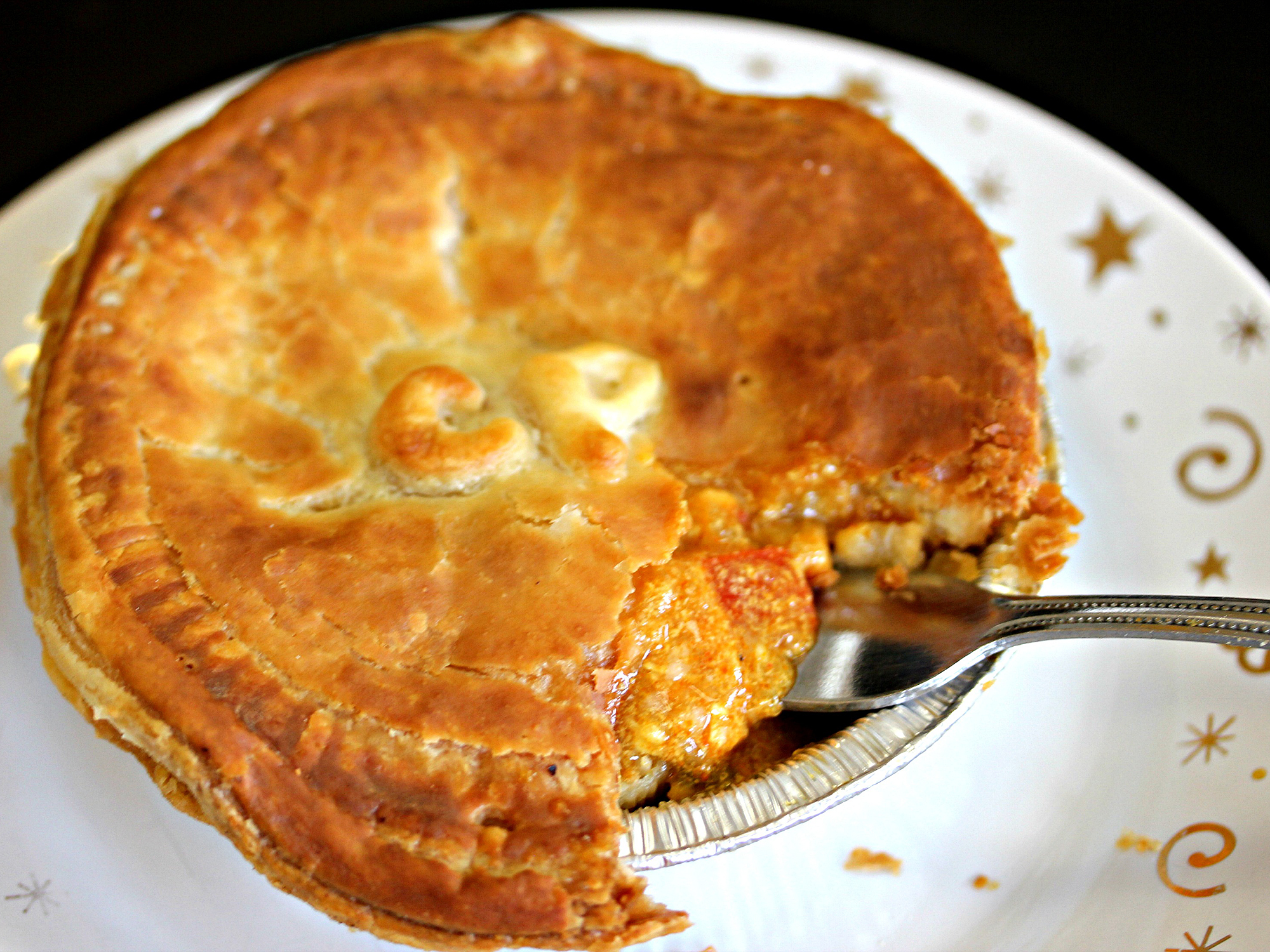CHICAGO AT THIS POINT MAY HAVE TOO MANY tasting menus. There is only so much of an audience for lavish meals lasting hours. But Chef Justin Behlke of the pop-up Thurk, currently serving a couple of times a month at Elizabeth Restaurant or Local Foods, aims to set his menu apart with its reverent devotion to sustainability, simplicity, and truly slow food. He sees each dinner as an encapsulated portrait of a season rather than a parade of jetted-in seafood, mysterious gels, and foie gras.
Behlke hails from Wisconsin and seems to have entered the Chicago restaurant scene from nowhere. I met him via LTHForum, where I took a risk on a random post about a chef wanting to host dinners at people’s houses. Luckily he not only wasn’t an ax murderer, he somehow cooked a delicious and innovative meal out of my miserable little kitchen, mysteriously leaving it cleaner than before. He named his supper club “Thurk” in memory of his late grandfather’s last name. For a year or so he did these small dinners at people’s apartments, until he joined the team opening the beloved Cellar Door Provisions in Logan Square, helping to develop their bread and savory food programs.
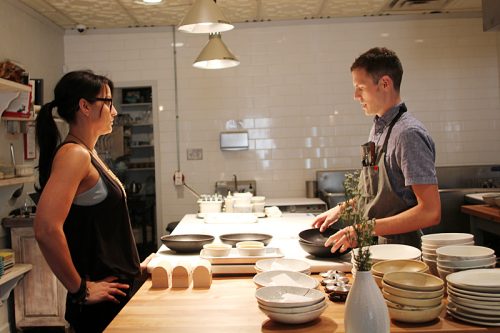
But Thurk still called to him, and when Chef Iliana Regan asked him to start doing similar pop ups at at her Bunny bakery, he took that on. The Wunderpop pop ups varied from menus similar to Thurk to enthusiastic forays into other cuisines such as Nashville Hot Chicken. Unfortunately, after only a few months, Bunny shuttered, but Regan kept Belhke on her team and offered to let him resurrect Thurk itself at her original restaurant, Elizabeth.
“I got into cooking because of my interest in sustainability and supporting farmers. I’m inspired to create dishes that go beyond the status quo,” says Behlke. Part of this for Behlke means eagerly embracing the moniker “vegetable focused,” but he says “That doesn’t mean vegetarian—each dish has 4 ingredients. In spring and summer that’s a [primary] vegetable, which is then highlighted with other things such as a broth, or other vegetables.” (He offers an entirely vegetarian menu option as well.)
“As a human being who cooks food I feel responsible for focusing on connecting people with foods, plants in particular, that they have lost connection with through the control of our current food system,” says Behlke. What he aims for is the equivalent of nose to tail, but with stems and leaves and roots.
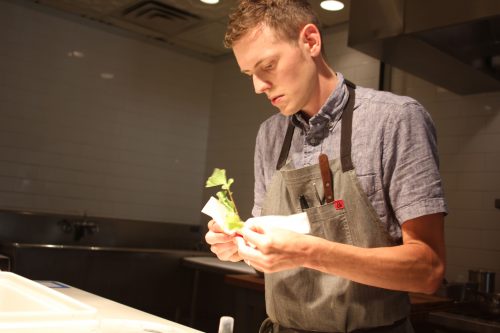
Justin Behlke
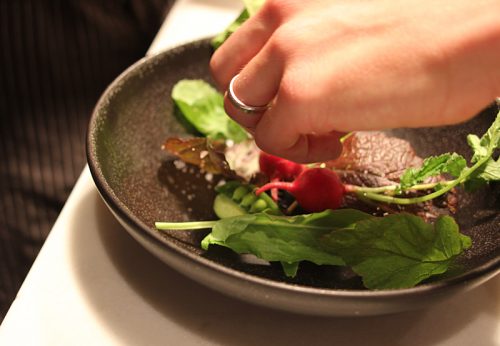
“I want to use ingredients through the menu that make sense, and use each part of them,” says Behlke. For example, any leftover leaves from other dishes go into a salad that is served atop a crisp made with even more greens—lately lamb’s quarters. It’s not uncommon to find accents to other dishes made by fermenting various vegetable stems, a process that concentrates and transforms the flavor of the original source.
One of the ingredients he does this with lately is black chickpeas, which he ferments with barley koji for ten months to make a miso. “It ends up with a ton of flavor, and it’s also just this interesting age-old tradition from Japan, with the idea of preserving things and granting health benefits. It also just tastes good. The zucchini I serve it with are crunchy and crisp and it contrasts nicely with the saltiness of the miso,” says Behlke. “Chickpeas have more of their own unique legume flavor compared to the soybeans miso is usually made with—when you use chickpeas to make it that flavor and color really comes through.”
“I want to use ingredients through the menu that make sense and use each part of them,” says Behlke. What he aims for is the equivalent of nose to tail, but with stems and leaves and roots.
But despite the vegetable focus, one of the dishes that has become his signature is a tartare, made with the best beef and lamb he can find and finished with the best of the season’s vegetables. Right now it’s the sole meat-dominated dish on the menu, and the beef is mixed with fermented purslane stems and homemade chanterelle vinegar. “Each vegetable not only has a season, it has a peak of the season—a ‘microseason,'” says Behlke.
The tartare served with his other signature—some of the best bread available in Chicago right now. “Bread is a simple thing, it’s only flour, water, sourdough starter,” Behlke explains. “But this simple bread takes two days from start to finish. Over time you develop an intuition and tweak each of the little details. It’s really the most complex thing I make.”
Gallery: The Strange and Beautiful Vegetables of Thurk
Another way he bucks the trend is by growing slowly. Chicago has had some notable restaurant failures that involved investor conflicts and huge over-capitalized buildouts. “Thurk is a project meant to transform into a restaurant—right now it’s close to the kind of restaurant I’d want to open,” says Behlke. “My goal is dining experience focused on ingredients, employee pay, and a lower-budget build out. A balance of casual and highly technical.” His design isn’t just about supporting sustainable agriculture, but a sustainable business.
“Right now I’m in a place trying to get people to learn about what Thurk is, that it’s more than just a part of Elizabeth,” says Behlke. “My plan is to keep doing these dinners at Elizabeth to build support and through them to start having conversations about investing into a restaurant.”
Behlke also participates in Elizabeth itself doing recipe development, and filling in occasionally as staff in the kitchen. “Two days a week I’m at Elizabeth, and there is a list of research and development projects I’m focusing on,” he says. “I’m doing research on miso and meat curing. Any projects that Iliana is interested in, I’ll work on that—documenting all the steps, taking the time to be through. It’s about taking something we want to learn about and understanding it fully, or at least making a start to doing so.”
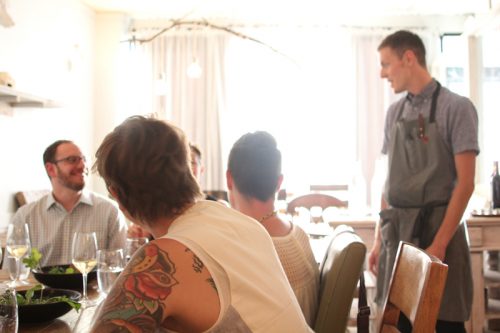
Towards the end of his meals lately is a course of a tart made with a feather-like covering of oxalis, the tiny delicate clover-like leaves of a plant that’s traditionally considered a garden weed. Underneath is a custard made of buckwheat honey, dulse, eggs, cream, and plum vinegar. It’s a delight of caramel and smoky flavors.
It’s the perfect end to a surprising—and yes, not too long dinner. A connection with a plant that is often considered a garden weed. And a dish that simply on its own, not knowing what it is, is both strangely beautiful and delicious.
To find out more about Thurk dinners, go here. Dinners are currently $90 plus gratuity, and are BYO.
When Melissa McEwen isn’t writing about food, she’s the PR agent for pizza squirrel and a spider farmer. You can pester her on Twitter @melissamcewen.
Latest
Join the Discussion
After you comment, click Post. If you're not already logged in you will be asked to log in or register with Disqus.





















